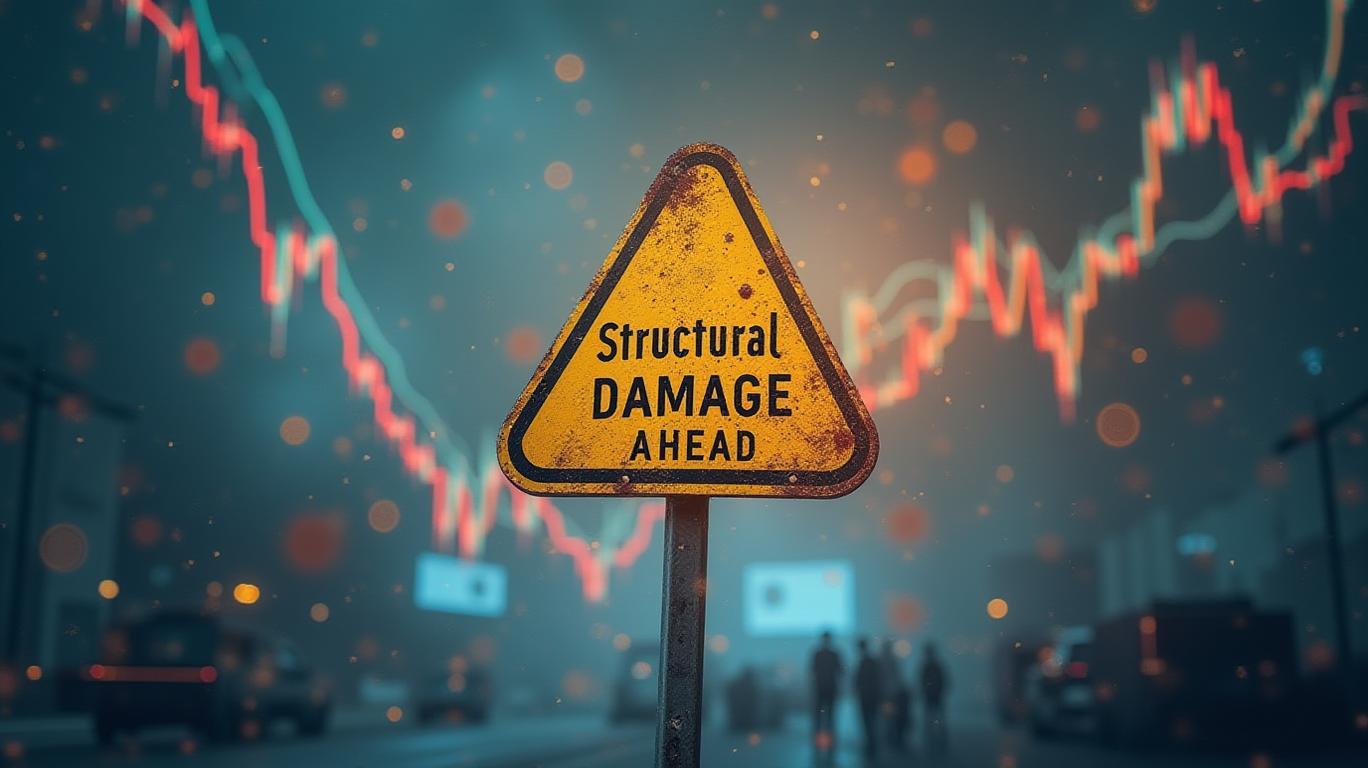Why Recession Risks Remain Despite Tariff Truces: Positioning for a Fragile Recovery
The recent suspension of global tariffs has sparked optimism about easing trade tensions, but beneath the surface, the structural damage of prolonged trade wars persists. Lingering sector-specific tariffs, corporate price hikes, and weakening economic indicators validate
CEO Jamie Dimon’s warnings of a potential recession. Investors must recognize that tariff truces are temporary pauses—not solutions—to systemic vulnerabilities. Here’s why positioning for caution remains critical.
The Hidden Costs of "Truce" Tariffs
While 2025’s tariff suspensions (e.g., China’s 34% tariffs reduced to 10% until August) offer short-term relief, critical sectors remain shackled by persistent levies:
- Aluminum & Steel: 25% tariffs on imports (applied in March) now extend to derivative products like beer cans and ship-to-shore cranes. This has driven U.S. manufacturers to raise prices, with ripple effects across industries.
- Automobiles: Non-USMCA-compliant vehicles face 25% tariffs, while investigations into semiconductor and pharmaceutical tariffs loom. Automakers like Tesla () face headwinds from supply chain costs and delayed investments.
- Consumer Goods: Walmart’s recent price hikes—driven by tariff-induced cost pressures—signal a broader erosion of consumer purchasing power.
Consumer Spending: The Fragile Pillar
Retail sales data underscores the strain. Despite temporary tariff relief, year-over-year growth has stalled at 0.5% (as of April), with discretionary spending declining for three consecutive months. Producer prices, a key gauge of inflationary pressures, have flattened but remain elevated due to lingering tariffs.
Walmart’s stock performance reflects this tension: stagnant growth amid price hikes and margin squeezes. Meanwhile, defensive sectors like utilities () have outperformed cyclicals by 12% year-to-date, signaling investor rotation toward stability.
Why the Recession Risk Persists
- Geopolitical Escalation: The EU’s threat to impose $95 billion in retaliatory tariffs on U.S. exports—including aircraft and medical devices—adds uncertainty to trade-dependent sectors.
- Corporate Caution: Companies are delaying capital spending as they navigate tariff volatility. Semiconductor firms, for instance, face a double blow from investigations into imports and domestic supply chain bottlenecks.
- Consumer Deleveraging: With wages stagnant and prices rising, households are cutting back on discretionary spending—a key indicator of recessionary sentiment.
Investment Strategy: Prioritize Resilience
Underweight Cyclicals:
- Retail: Avoid retailers exposed to tariff-driven inflation (e.g., Walmart, Target). Their margins are under siege as costs outpace sales growth.
- Autos: Tariff risks and supply chain constraints make automakers vulnerable. Avoid ETFs like XCAR ().
Overweight Defensives:
- Utilities: Regulated revenue streams and low sensitivity to economic cycles make sectors like NextEra Energy or the XLU ETF () compelling.
- Healthcare: Defensive stocks like Johnson & Johnson or healthcare ETFs (XLV) offer stability amid rising healthcare demand.
Cash Preservation & Hedging:
- Inverse ETFs: Use SAI () to hedge against market declines.
- Rate-Sensitive Bonds: Treasury bonds (e.g., IEF) or high-quality corporate debt offer downside protection as rate hikes slow.
Conclusion: Don’t Be Fooled by Truces
The pause in tariff escalation is not a green light for risk-taking. Structural damage—from supply chain fragility to consumer spending erosion—remains unresolved. Investors who ignore these risks and cling to cyclical assets may face steep losses. Now is the time to pivot to defensive holdings, preserve cash, and hedge against the storm clouds on the horizon.
The path to recovery is fragile. Position accordingly.

Comments
No comments yet